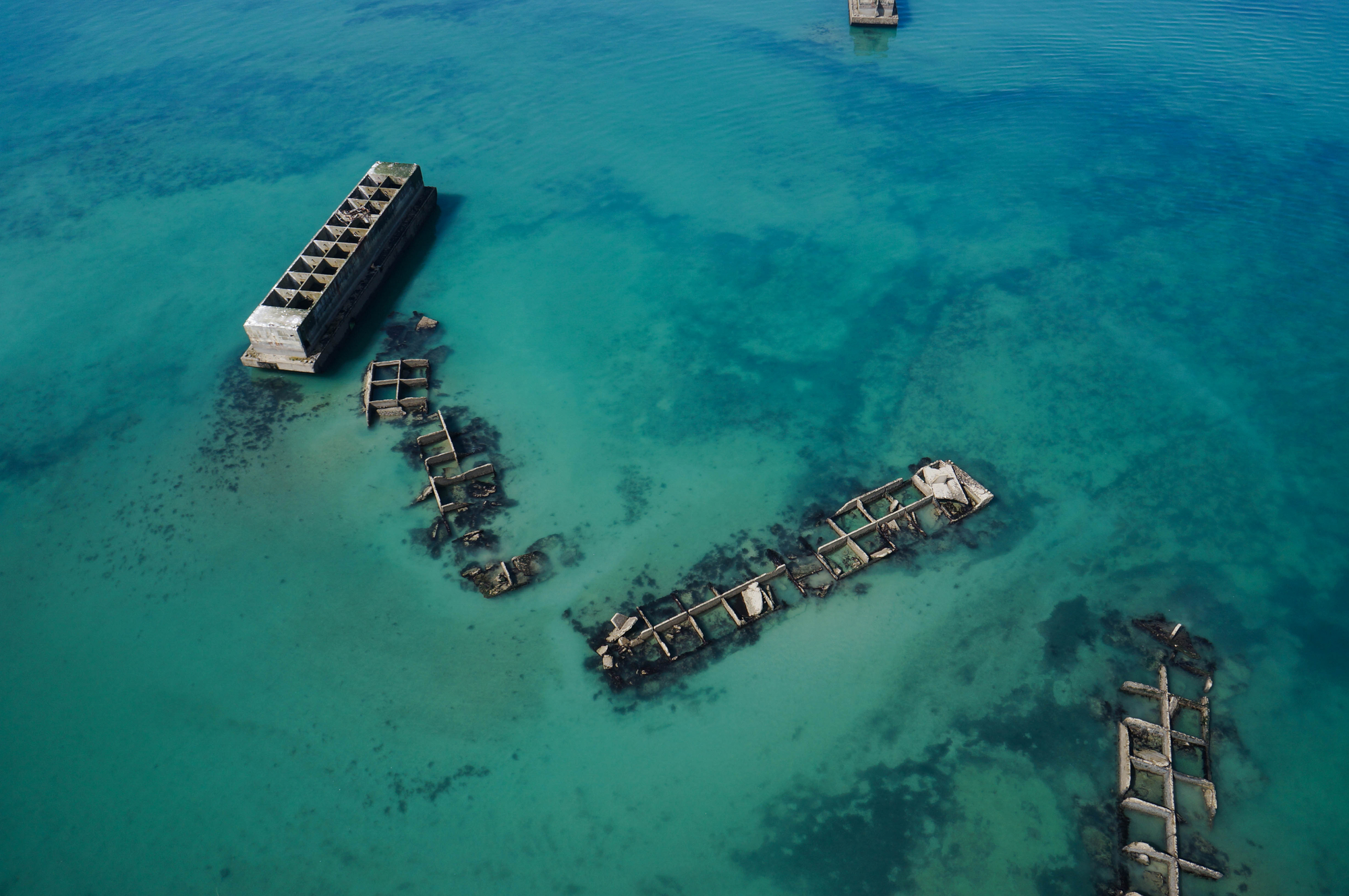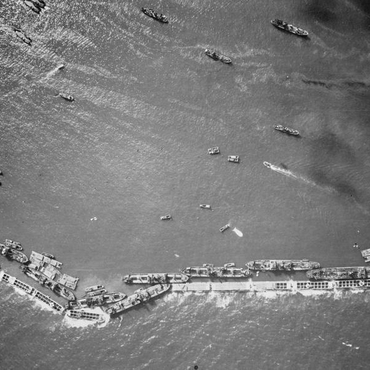
- Home
- A heritage destined to disappear
- The case of the artificial harbour off Arromanches
In 2015, the Normandy Region commissioned a study by the engineering consulting firm Antéa to assess the state of conservation of the artificial harbour off Arromanches and its future evolution.
From installation to dismantlement
The artificial harbour Mulberry B (B for British because it was intended for the landing of British troops and equipment), was installed on the evening of 6 June 1944, from elements constructed in Great Britain and towed to the area between Manvieux and Asnelles. It was in service from 18 June to 19 November 1944.
The harbour was formed by 24 floating breakwaters (Bombardons) and by dykes made up of 18 blockships and 115 reinforced concrete caissons (code-named Phoenix). Inside the harbour, three quays on jacks (Loebnitz platforms), with extending concrete pontoons, were connected to the coast by four floating roads (Whales).
In 1945, the British Admiralty began dismantling the port and the metal gangways were re-used in various places in Europe to compensate for the destruction of bridges during the conflict.
Structures destined to disappear
Today, an extension of the platform and 16 concrete floats (Beetles) are still visible from the beaches of Arromanches and Saint-Côme-de-Fresné, as well as three sections of floating roads at Arromanches. The Phoenix caissons that remain at sea have been more severely damaged. After the war, at least two of them were blown up and two others were reused by the port of Le Havre, while others were relocated. The 96 caissons that remain on site were studied in 2015 by the consulting firm Antéa, at the request of the Normandy Region.
They were the subject of a complete survey using a multibeam echo sounder (for submerged elements) and a 3D laser (for exposed remains), a systematic inspection by drone was also conducted and concrete samples were taken. Only eleven caissons are still well preserved, with 67 others in a state of ruin. Due to the microporosity of the concrete, chlorides present in the seawater penetrate and cause corrosion of the steel reinforcements, which in turn, crack the concrete structures. The central parts of the caissons, more stressed by the effects of the swell, are generally the most deteriorated. Without intervention, it is estimated that by 2075 there will be no remaining caissons in good condition.





